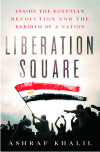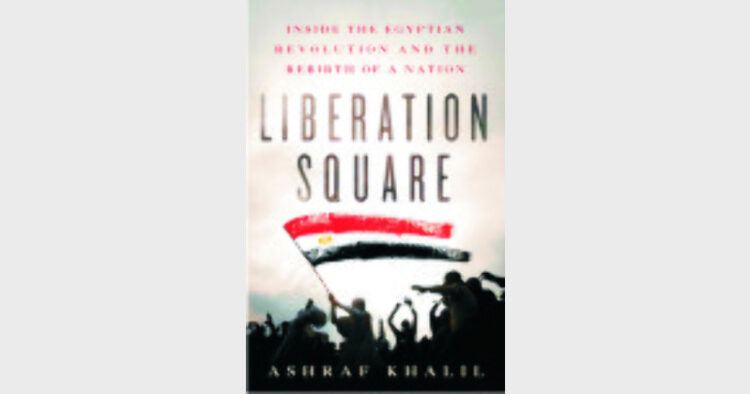Jayant Patel
Liberation Square: Inside the Egyptian Revolution and the Rebirth of a Nation, Ashraf Khalil, St. Martin’s Press, Pp 324, $ 26.99
 Written by a Cairo-based reporter who witnessed first-hand President Hosni Mubarak’s demise and the country’s effort to build a democracy, this book is an account of the Egyptian revolution to put an end to three decades of the President’s supremacy. For 18 days, chaos and defiance reigned on the streets as protestors of all ages gathered in Tahrir Square to fight for liberation and when Mubarak’s once-fearsome band of butchers were being openly hunted in the streets surrounding Tahrir Square, the epicentre of the revolution. The revolutionaries’ most dominant chant became: “We won’t leave until he leaves.”
Written by a Cairo-based reporter who witnessed first-hand President Hosni Mubarak’s demise and the country’s effort to build a democracy, this book is an account of the Egyptian revolution to put an end to three decades of the President’s supremacy. For 18 days, chaos and defiance reigned on the streets as protestors of all ages gathered in Tahrir Square to fight for liberation and when Mubarak’s once-fearsome band of butchers were being openly hunted in the streets surrounding Tahrir Square, the epicentre of the revolution. The revolutionaries’ most dominant chant became: “We won’t leave until he leaves.”
And that’s exactly what happened. Mubarak, after 29 years in power, was forced to flee because the Tahrir protestors wouldn’t leave and wouldn’t accept anything less than the end of his reign.
It all began on January 25, 2011, when a loose coalition of young activist groups called for a day of mass protests. Riot police used tear gas and water cannons to disperse the thousands of protesters, taking Mubarak’s regime into uncharted waters. The protesters called for January 28 as a massive ‘Day of Rage’ protest. The government reacted by shutting down all internet services and cutting the mobile phone network. On the appointed day, street battles and protests were tried to be kept at bay by the police using riot batons, tear gas, water cannons and buckshot, but was routed. Hosni Mubarak ordered army deployment for the first time in decades and in a late-evening speech to the nation pledged to remain in office and decried the protests as the work of foreign agents out to destabilise Egypt.
On February 1, 2011, Mubarak offered not to nominate himself for presidential election scheduled for autumn of 2011, but the offer was rejected by the Tahrir protestors. Large crowds of pro-Mubarak protesters, many of them wielding weapons, lay siege to Tahrir Square but the protestors of Tahrir Square maintained their group. Egypt celebrated and found itself under the rule of the Supreme Council of the Armed Forces – a collection of senior Generals. Readers interested in events in the Middle East would enjoy reading this book.
(St. Martin’s Press, 175, Fifth Avenue, New York, N.Y. -10010)





![A Representative image [ANI Photo]](https://organiser.org/wp-content/uploads/2025/12/representative-image-e1765612818961-120x70.webp)







Comments